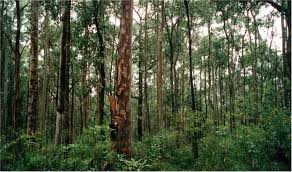Although many people believe that Australia is sparsely populated, some environmental scientists are concerned about overpopulation of gum trees in the country. There are more than 700 species of Eucalyptus in Australia. These trees are well known to be water-suckers in a country which is the driest continent in the world. The trees population is claimed to have reached Australia’s “carrying capacity” although the actual number of gum trees is difficult to estimate, there are signs that their population is growing. Some environmental scientists argue that to achieve ecological sustainability in Australia, there have to be immediate measures to limit increases in gum tree population.
The argument that the sheer growth in gum tree numbers is destroying the continent is rooted in the biological concept of the carrying capacity of local environment. The term was originally used to refer to the population density of a given species that a natural habitat could sustain indefinitely.
The efficient ability of the eucalyptus at scrounging water from the soil has been applied to great effect in draining marshy and water logged areas in land reclamation programs. This characteristic of the tree has proven to be of the greatest help in the complete reclamation of water bogged malarial swamps in many countries with hot and humid climates. For example, the malarial swamps in the Central American country of Guatemala were largely reclaimed by planting a large number of eucalyptus trees in the marshy waste lands that acted as the breeding grounds of mosquitoes. It has been claimed that any mature tree can use a lot of water in the growing season, but uses very little when leaves fall in the winter. The gum trees do not lose their leaves and so continue to absorb water around the year.







